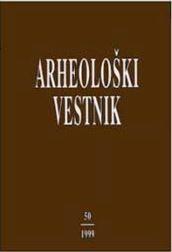An Etruscan bone box from south-west Serbia and the problem of Late Archaic imports in the central Balkan area
Abstract
The bone box from a princely tumulus at Atenica near Čačak, decoratcd in low relief with a fight of a lion and a stag sidelong and with a prone lion figure on the cover, is most probably of Etruscan origin. A large number of boxes of comparable size, shape and ornamentation have been found in Etruria; from that area they spread all over the Mediterranean world. Mentioning scanty Etruscan finds in the interior of the Balkans the author concludes that the box reached Atcnica, along with other south Italic and Greek objects, through the agency of Greek merchants. The occurrence of a great number of Greek and south Italic objects in the Central Balkans, in the last third of the 6th and the first third of the 5"' centuries B.C., is accounted for by specific circumstances: the growth of political and economic power of local princes and their increasing interest in foreign goods, as well as some historical events, like conflicts of the Greeks with the Persians and Carthaginians and the necessity of searching for new and insufficiently exploited markets. Finally, one of the problems brought forward by this import is discussed: the relationship of Greek Late Archaic and local geometric arts in the Central Balkans.
Downloads
Downloads
Published
How to Cite
Issue
Section
License

This work is licensed under a Creative Commons Attribution-NonCommercial-ShareAlike 4.0 International License.
Authors guarantee that the work is their own original creation and does not infringe any statutory or common-law copyright or any proprietary right of any third party. In case of claims by third parties, authors commit their self to defend the interests of the publisher, and shall cover any potential costs.
More in: Submission chapter





